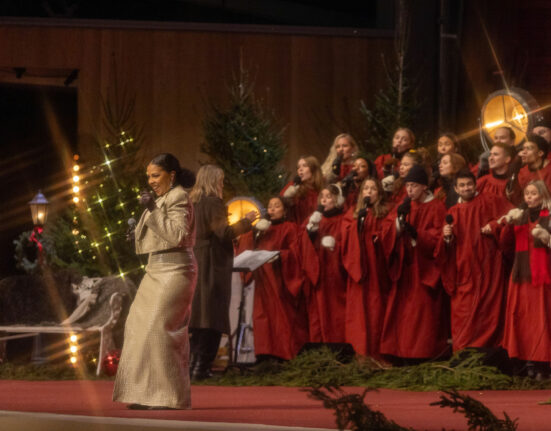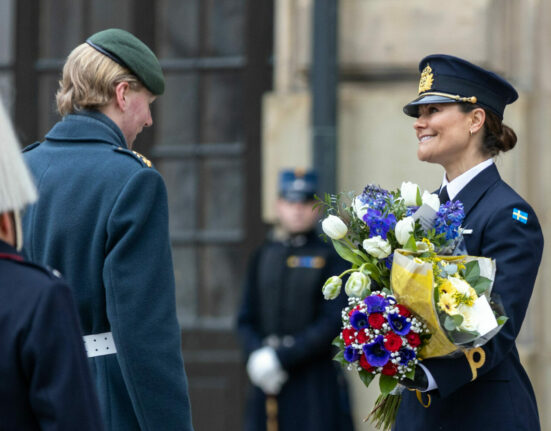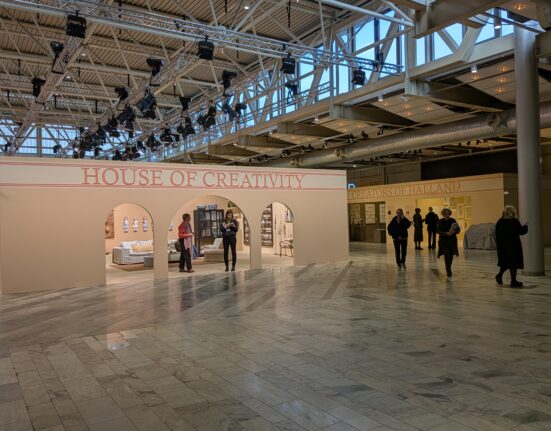Come Friday Stockholm will be overrun with white-clad kids and girls with candles in their hair. YLC’s Judi Lembke explains Swedish Christmas, one tradition at a time…

We already know that winter in Sweden is cold, it’s dark and it sometimes feels like the sun will never show its face again. Here enters Lucia, the celebration of light on December 13th that makes the days leading up to Christmas seem just a little bit brighter.
So just who was St. Lucia (or Lucy)?
To make somewhat complicated – and often conflicting – story relatively simple: Lucia was a devout young Catholic girl who was left a substantial dowry upon the death of her nobleman father. Lucia’s mother, a non-Christian, played matchmaker, betrothing her virtuous daughter to a rich pagan man. Lucia, who had already consecrated her virginity and life to God, didn’t want to marry the pagan man and wanted to distribute her dowry to the poor – which her mother did not support. Lucia devoted herself to her good works, part of which included helping her fellow Catholics who hid in dark underground catacombs to escape persecution. She would wear wreaths of candles on her head to find her way in the dark because her hands were busy carrying food and drink for her fellow Catholics.
Lucia’s mother became ill and travelled with Lucia to the St. Agatha shrine, where an angel appeared in Lucia’s dreams and announced the returned health of her mother. In light of this miracle Lucia’s mother converted to Christianity and agreed to dispense of the dowry to the poor, which enraged Lucia’s fiancé. He denounced her as a Christian and alerted the authorities, who threatened to throw her into a brothel. But, as legend has it, the Holy Spirit entered her body and made her impossibly heavy to move. In the end, somewhere around 310 AD Lucia was burned, stabbed and eventually beheaded and as a result sainthood was not far from her grasp.
So how did this tragic story end up a celebration of light in Sweden, where church attendance is at around 5%?
It seems the tradition started amongst the upper class in the 18th century, in the area around Lake Vänern, when a ‘Jesus Child’ would appear with a candle wreath in her hair, handing out cakes and sweets to children. This eventually morphed into the eldest daughter rising early, plonking the 9-candle wreath on her head, and awakening the family in order to serve them coffee and St. Lucia buns, and usher in the Christmas season.
The modern tradition of the public Lucia procession began in 1927 when a Stockholm newspaper elected an official Lucia for Stockholm, a tradition that quickly spread across the country, with most cities now appointing an official Lucia each year.
Schools also elect a Lucia and her maids and now even boys take part in the procession, although that has led to some controversy in recent years after the election of boys as Lucia or co-Lucia was blocked at several schools.

Personally, I have a soft spot for Lucia. Every year when my kids would take part in their school celebration I’d hear the strains of the Sankta Lucia song grow and grow as the children entered the room and by the time they were at the front of the room I’d be trying to stem the flow of tears.
Never mind that my two boys hated the tradition (mainly because they were forced to wear what look like old-fashioned nightgowns topped by a wizard’s hat and that they thought it completely unfair that the girls got to risk having their heads catch fire).
There’s just something lovely about sitting in a darkened room as a procession of children softly float through the room, singing in their beautiful voices a song of light on a cold, dark, mid-December afternoon.
It may seem a bit odd for this non-secular country to celebrate a Catholic saint but Swedes have made this tradition their own and it serves its purpose wonderfully: when Lucia arrives we all know that the holidays are just around the corner and we’re not far from having time to spend with those we love and hold dear. Bring it on, say I!
Judi Lembke
Judi Lembke is an experienced journalist who goes through life with a serene if slightly deranged smile on her face. When she’s not shackled to her computer, she enjoys reading, cooking and sometimes watching embarrassingly bad reality TV. (But don’t tell anyone. She prefers to be seen as far too highbrow for that sort of thing.) Judi also works with communications and thinks coming up with clever ideas is about as much fun as one can have without taking off one’s clothes.
For more info about what’s on in Stockholm, follow Your Living City on Twitter or subscribe to our newsletter here!











